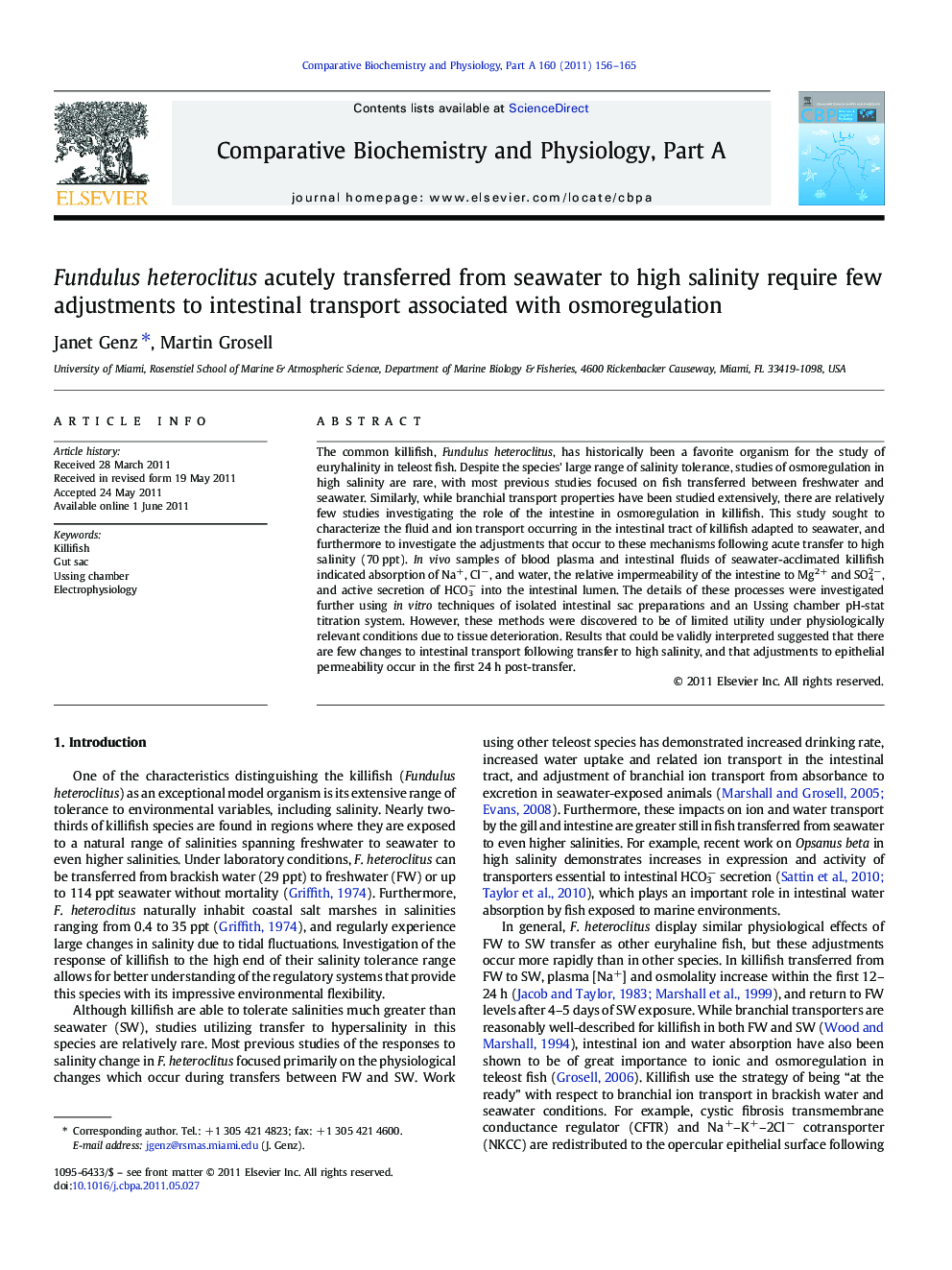| Article ID | Journal | Published Year | Pages | File Type |
|---|---|---|---|---|
| 10818988 | Comparative Biochemistry and Physiology Part A: Molecular & Integrative Physiology | 2011 | 10 Pages |
Abstract
The common killifish, Fundulus heteroclitus, has historically been a favorite organism for the study of euryhalinity in teleost fish. Despite the species' large range of salinity tolerance, studies of osmoregulation in high salinity are rare, with most previous studies focused on fish transferred between freshwater and seawater. Similarly, while branchial transport properties have been studied extensively, there are relatively few studies investigating the role of the intestine in osmoregulation in killifish. This study sought to characterize the fluid and ion transport occurring in the intestinal tract of killifish adapted to seawater, and furthermore to investigate the adjustments that occur to these mechanisms following acute transfer to high salinity (70Â ppt). In vivo samples of blood plasma and intestinal fluids of seawater-acclimated killifish indicated absorption of Na+, Clâ, and water, the relative impermeability of the intestine to Mg2+ and SO42â, and active secretion of HCO3â into the intestinal lumen. The details of these processes were investigated further using in vitro techniques of isolated intestinal sac preparations and an Ussing chamber pH-stat titration system. However, these methods were discovered to be of limited utility under physiologically relevant conditions due to tissue deterioration. Results that could be validly interpreted suggested that there are few changes to intestinal transport following transfer to high salinity, and that adjustments to epithelial permeability occur in the first 24Â h post-transfer.
Related Topics
Life Sciences
Biochemistry, Genetics and Molecular Biology
Biochemistry
Authors
Janet Genz, Martin Grosell,
